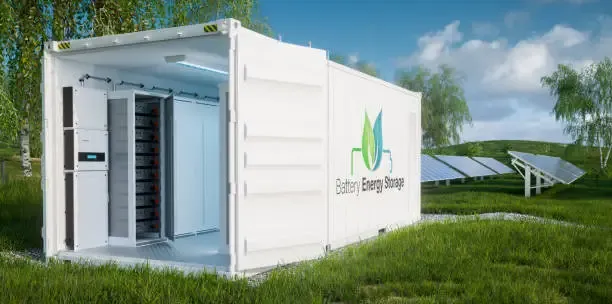
Why Energy Storage Systems are Essential for a Sustainable Future?
In today’s world, where environmental concerns and energy demands are at the forefront of global discussions, energy storage systems (ESS) have emerged as a crucial component in our quest for a sustainable future. These systems not only provide solutions to some of the most pressing energy challenges but also pave the way for a greener and more reliable energy infrastructure. Let’s explore why energy storage systems are so important, how they work, and their impact on our everyday lives.
Understanding Energy Storage Systems
Energy storage systems are technologies designed to capture and store energy for use at a later time. This can involve a range of technologies, from traditional batteries to advanced flywheels and pumped hydro storage. By storing energy when it’s plentiful and releasing it when it’s needed, these systems play a pivotal role in balancing supply and demand, making our energy use more efficient and reliable.
The Role of Energy Storage in Renewable Energy
One of the biggest advantages of energy storage systems is their ability to enhance the integration of renewable energy sources like solar and wind. Unlike conventional power plants, renewable sources are often intermittent—they produce energy only when the sun shines or the wind blows. Energy storage systems bridge this gap by storing excess energy generated during peak production times and releasing it when production is low.
For instance, imagine a solar farm generating electricity during the day when the sun is shining brightly. Without a storage system, this energy would be wasted if not used immediately. However, with energy storage, the excess electricity can be stored and used during the night or cloudy periods, ensuring a continuous and stable energy supply. This not only helps in reducing reliance on fossil fuels but also minimizes energy costs for consumers.
Benefits of Energy Storage Systems
Enhanced Reliability and Resilience
Energy storage systems provide backup power during outages, ensuring that essential services and facilities remain operational. This is particularly important for critical infrastructure like hospitals and data centers that require uninterrupted power supply.
Cost Savings
By storing energy during periods of low demand and using it during peak times, energy storage can help reduce energy bills. This is because energy is often cheaper during off-peak periods, and using stored energy during high-demand times can lead to significant savings.
Support for Grid Stability
Energy storage systems help stabilize the grid by providing a buffer against sudden fluctuations in supply and demand. This is crucial for maintaining a reliable energy supply and preventing blackouts.
Reduction of Greenhouse Gas Emissions
By supporting the use of renewable energy and reducing reliance on fossil fuels, energy storage systems contribute to lowering greenhouse gas emissions. This helps in the fight against climate change and promotes a cleaner environment.
Different Types of Energy Storage Technologies
Battery Storage
The most common form of energy storage, batteries come in various types, including lithium-ion, lead-acid, and flow batteries. Each type has its own advantages and is suited to different applications.
Pumped Hydro Storage
This technology uses surplus energy to pump water to a higher elevation. When energy is needed, the water is released to flow back down through turbines, generating electricity.
Flywheels
Flywheels store energy in the form of rotational motion. They can quickly release energy when needed, making them ideal for applications requiring rapid response.
Compressed Air Energy Storage (CAES)
CAES systems store energy by compressing air in underground caverns. When needed, the compressed air is released to drive turbines and generate electricity.
The Future of Energy Storage Systems
The future of energy storage systems looks promising, with ongoing advancements in technology and decreasing costs. Innovations such as solid-state batteries and large-scale energy storage solutions are expected to further enhance the efficiency and affordability of these systems. As we continue to shift towards renewable energy sources, energy storage will play an even more crucial role in ensuring a sustainable and resilient energy future.
Conclusion
Energy storage systems are vital for integrating renewable energy, enhancing grid reliability, and reducing costs and emissions. By storing excess energy and providing backup power, these systems contribute significantly to a more sustainable and efficient energy infrastructure.

